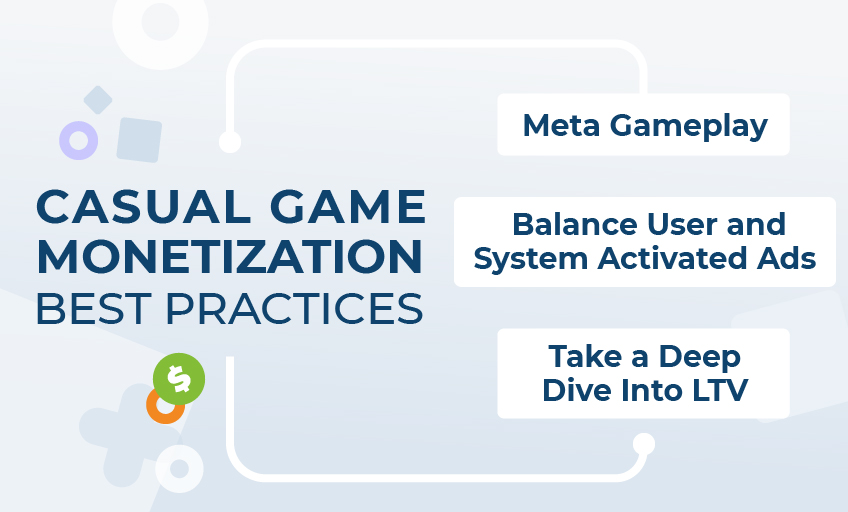Unlike mid-core or hardcore games, casual games consist of shorter sessions, which present more opportunities for users to exit. However, the key to monetizing casual games is to keep users in your game.
So how do you achieve that?
The key is to target as many users as possible and keep them engaged. Here are three best practices for casual game monetization.
- Add meta gameplay
Let’s take a match-3 game as an example. According to GameRefinery, about 70% of the US top-100 grossing match-3 games feature meta elements such as mini-games, collection, construction, narrative, a progression system, and social features. Different gameplay options attract various audiences to enlarge the user base. They also satisfy people who are looking for new content to explore. What’s more, meta gameplay also means new monetization opportunities. For example, when there’s a collection of mechanics that offer level progression, users tend to prefer to stay in the game to finish tasks.
- Balance user- and system-activated ads
Deciding between user-activated ads (such as rewarded video) and system-activated ads (such as interstitial and banner ads) is a crucial balance. Rewarded video offers relatively higher eCPM, but with higher showing frequency and reward value, in-app purchases may suffer. Banner ads can also help increase ad revenue and provide good user experience if they are placed in the right location with auto-refresh. Developers should A/B test ad frequency, placement, and value regularly while monitoring user ad experience and feedback from different ad formats. For puzzle games, the best performers were 22-second videos and end cards with an app store link.
Our Chartboost Mediation platform now includes a keywords targeting feature that offers publishers the flexibility to serve ads to non-payers only to avoid driving away paying users.
- Take a deep dive into LTV
For casual games that boast an in-app purchase (IAP) percentage greater than 30%, publishers should monitor lifetime value (LTV). While it’s easy to collect IAP data, the trick is measuring ad revenue per user correctly.
Chartboost Mediation’s impression-level ad revenue data (ILRD) provides access to both impression- and user-level ad revenue data. Publishers now can build a full picture of user LTV, identifying money payers and ad revenue contributors so they can better optimize user acquisition channel selection.
For all the latest trends in the casual game market, read 2022 Casual Game Market Trends and Observations.
If you don’t want your casual games to fall behind, check out Chartboost Mediation. Sign up today.



